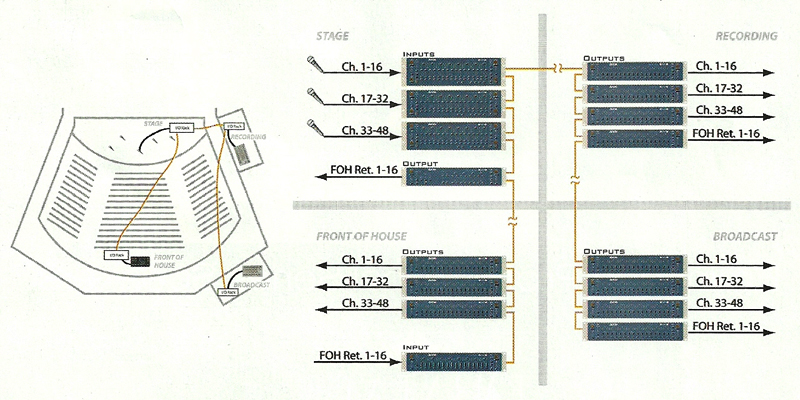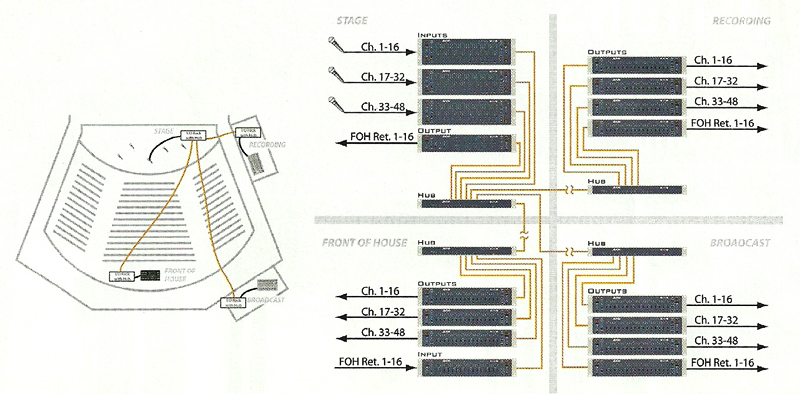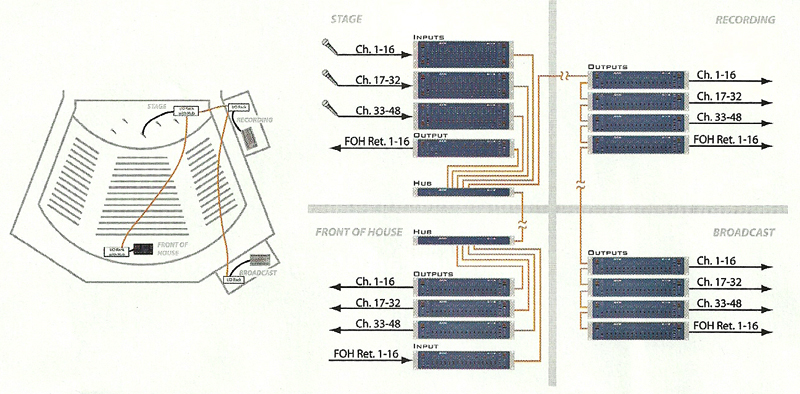
Latency: Yet another aspect of timing that needs to be controlled in a network is latency.
Total system latency in a network is the time delay between the audio input at one device and the audio output at another.
In audio networks, just as in data networks, latency accumulates with each hop.
In many environments audio delays of more than a millisecond caused by the network can be as unacceptable as the distortion caused by jitter.
We’ve seen that latency can be kept low, but not by using technologies designed for IT-style uses.
The real challenge is to keep latency low while also preserving clock integrity and fidelity by managing jitter and wander, and to do so without limiting system topology.
System Topology Limitations: Networks can be serially connected daisy chained, connected in parallel (all audio modules connect to a switch or hub), or a combination of both (see Figures 1, 2 and 3, below.).
But the real promise of a network is to get a signal from anywhere to anywhere while connecting the boxes in any way that an application requires. Virtually all current networks place limitations on how devices can be connected to one another.
A few current networks can connect in a hybrid serial parallel topology, but they impose limitations on signal flow, creating upstream/downstream constraints. Next generation DANs demand more flexible topologies without signal flow limitations.



Ease of setup: Many existing digital audio networking systems rely heavily on IT-style Ethernet data structures. Because of these computer and IT-style networks, many people have come to associate installing a digital audio network with a cumbersome setup that requires IT skills.
Like all computer-based systems, digital networks carry the risk and maintenance burdens of computer-based vulnerabilities such as crashes. And if the goal of a network is to combine the best of analog and the best of digital, setup needs to be closer to analog: plug and play, with an audio-style work-flow and mindset.
